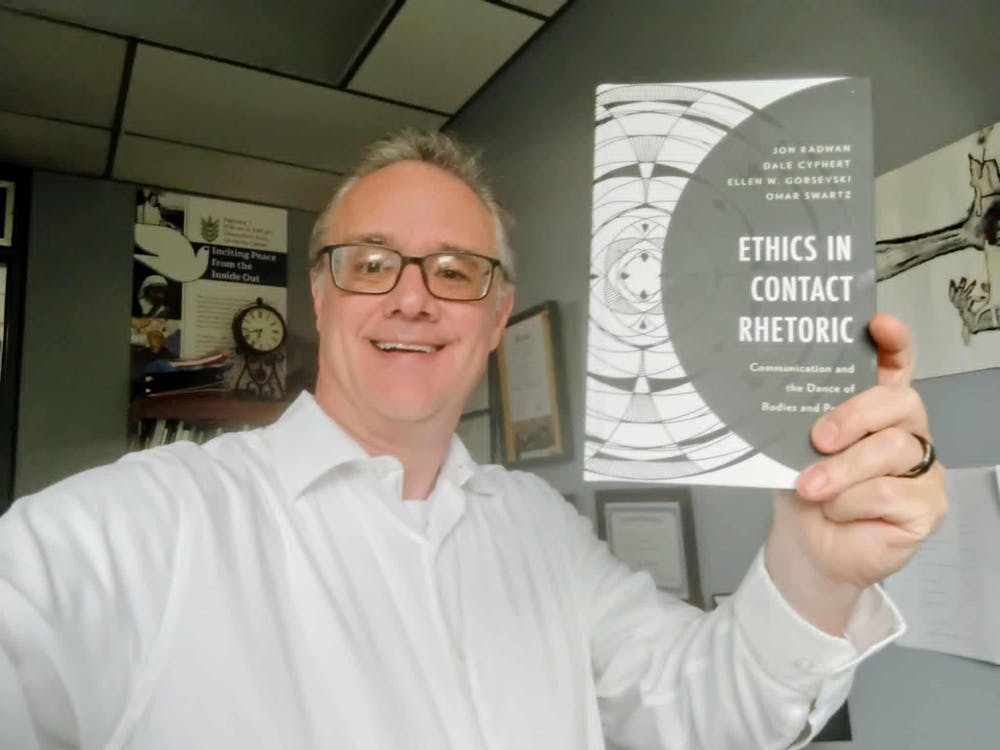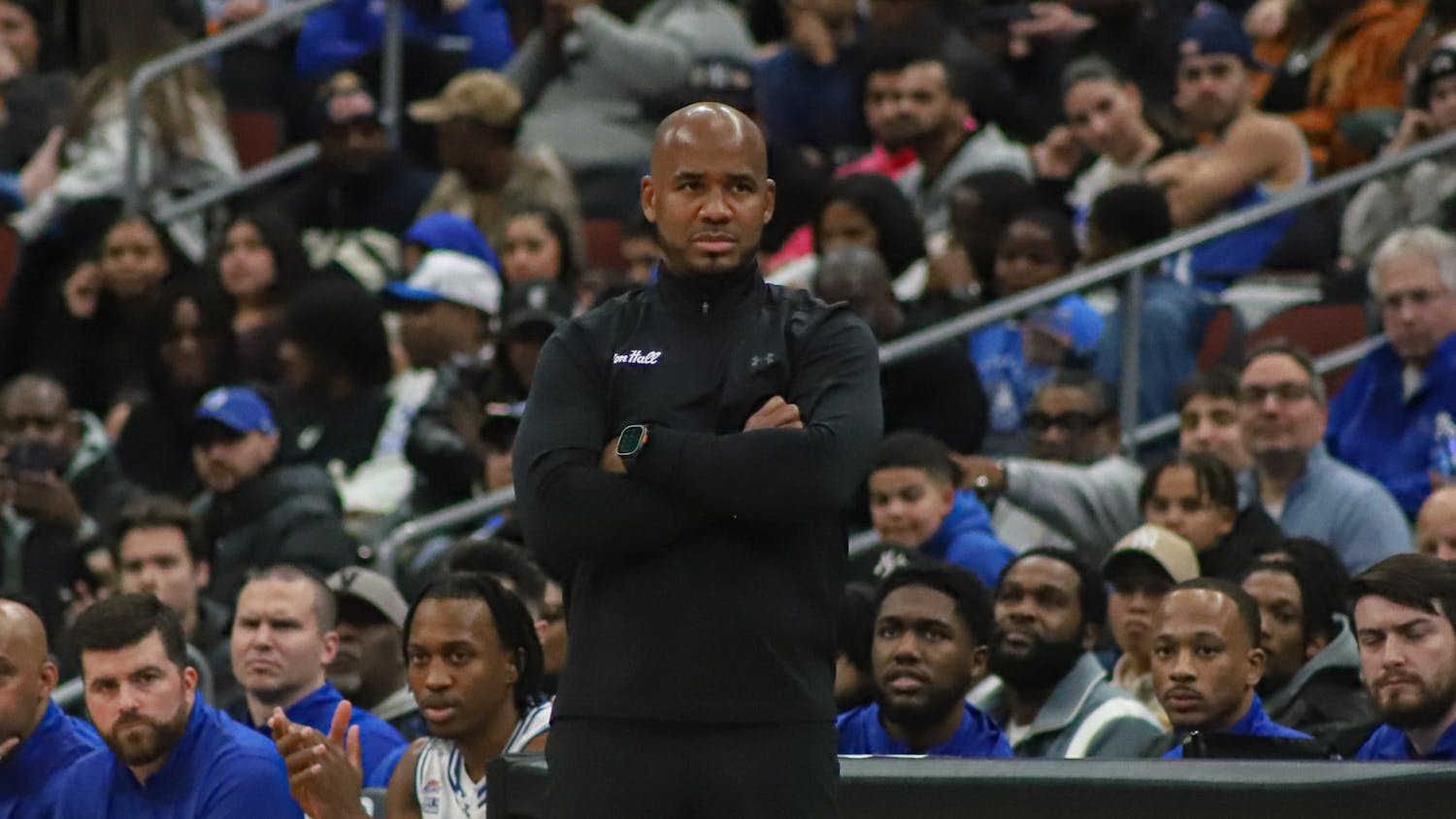In a time where language may not satisfy as the sole method of communication and the digital seems to have overtaken our ability to connect, Dr. Jon Radwan invites students and readers to reconsider where communication truly begins.
Before coming to Seton Hall, Radwan, an associate professor in the Department of Communication, earned a Bachelor of Arts (B.A.) in communication from the University of New Hampshire, a Master of Arts (M.A.) in communication studies from Northern Illinois University, and a Doctor of Philosophy (Ph.D.) in speech communication from Penn State University (PSU).
Radwan is an associate professor of communication and director of the Institute for Communication and Religion (ICR), “a nexus for ongoing scholarly exploration of communication topics critically important to religion and society,” in SHU's College of Human Development, Culture and Media.
In addition to his academic work, Radwan published his book in December 2024, “Ethics in Contact Rhetoric: Communication and the Dance of Bodies and Power, co-authored by Dale Cyphert, Ellen W. Gorsevski, and Omar Swartz.
Their collaboration grew out of a shared interest in exploring how physical contact, rather than speech, shapes ethical communication.
The team came together after Radwan’s research on touch and communication sparked interest among scholars from different backgrounds, leading to this collaboration.
Each author brought their own expertise to the book, enriching the discussion with diverse perspectives from ethics, rhetoric, and educational experiences.
Together, they worked to challenge traditional notions by shifting the focus from symbolic acts to relational and physical performances, ultimately offering a new idea for understanding how meaning is created through contact.
At SHU, Radwan teaches courses like Introduction to Communication Theory, History of Rhetoric, Intercultural Communication, Persuasive Speaking, Dynamics of Interpersonal Communication, Foundations in Oral Rhetoric.
Radwan ties in a variety of concepts from his book directly to the classroom.
“I first tested one chapter in COMM 1610, Dynamics of Interpersonal Communication,” Radwan said. “Student feedback was encouraging, so now to detail haptics and embodiment, I integrated a few more chapters into COMM 2630, Non-Verbal Communication.”
Radwan’s integration of his research into teaching displays how communication students can take away key principles from this book and understand what "contact rhetoric" is.
“Students of communication who read ‘Ethics in Contact Rhetoric’ should understand that touch is our primary mode of meaning,” Radwan said.
Radwan uses case studies involving nonviolent resistance, religious thought, and the language of dance to encourage readers to interpret our communication, but also that contact can be an ethical foundation of communication.
“I wanted to find a theory of rhetoric that did not rely on ‘the word,’” Radwan said.
His main thesis delves into the theme of “contact rhetoric,” a mode of communication based on physical touch and relationships. Communication becomes not just an exchange of information, but about building relationships with one another through giving and receiving.
“Contact is [a] joint meaning; it is not a one-way action, it is shared,” Radwan said.
Most notably, dance theory is used to discuss how dance can be a form of communication that showcases how relationships can be built together through spiritual and physical contact.
“Dance becomes a very powerful metaphor for all of our interaction; dance is always cyclical,” he said.
Each of the chapters dives into theological, mythical, and ideological case studies that represent contact rhetoric through different lenses.
For example, Radwan discusses his first chapter on the myth of King Midas. The King Midas myth depicts a king whose wish for everything he touches to turn into gold becomes a curse. This myth teaches that desires can have unintended consequences, and warns against the dangers of greed. Radwan believes that this ancient story showcases how important touch is. Radwan uses four different iterations of this story to showcase how touch is intrinsic to our society.
In his book, he notes that touch is important, especially in analyzing the traditional Christian approach to communication.
“Christian communication has incarnational significance; its meaning grows through physical co-presence and performance of works of mercy,” Radwan said. "The Bible showcases how religious figures themselves act physically in their care, love, and healing of others."
“Of course Jesus’ words are important, but there are relatively few of them. He is Word made Flesh. He did not write the Bible and did not tell others to write. Faith is bigger and deeper than language alone can express, and love of God and neighbor is a mode of missionary action that includes but is not limited to speech,” Radwan said.
On September 5, Radwan was a guest on “The Big Rhetorical” podcast hosted by Dr. Charles Woods, an Assistant Professor of Rhetoric and Composition at East Texas A&M University. The episode is now available at https://creators.spotify.com/pod/profile/the-big-rhetorical/.
Woods launched his podcast back in 2018 at Illinois State University, sharing the stories of emerging scholars.
Reflecting on his appearance on the podcast, Radwan described the value of sharing the uniqueness of his research on “contact rhetoric” with another rhetorician.
“Podcasts empower people to share their ideas with the media sphere,” Radwan said.
Through this platform, he was able to further explore the innovative concept of contact rhetoric presented in his new book, a theory that emphasizes how, at our core, “all of us came out of touch.”
Grace Tylee is the head editor for The Setonian’s Social Media. She can be reached at grace.tylee@student.shu.edu
CORRECTION: Elaboration on Radwan's statement on incarnational significance, as well as an updated link to "The Big Rhetorical" podcast.





